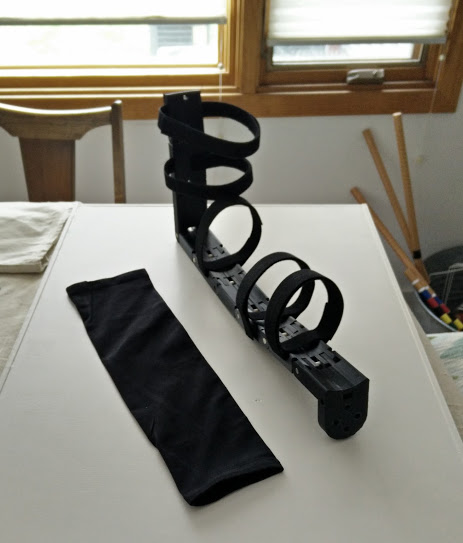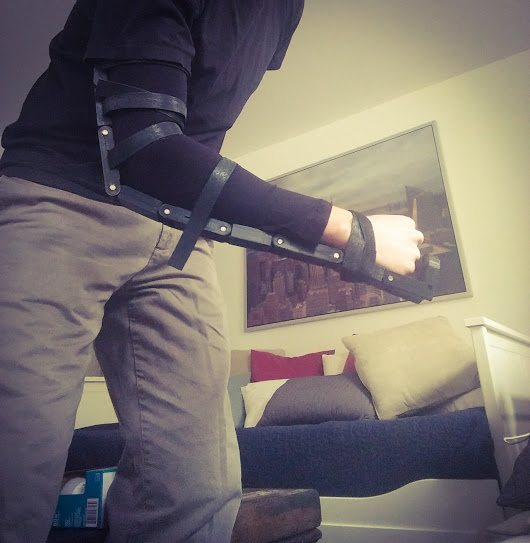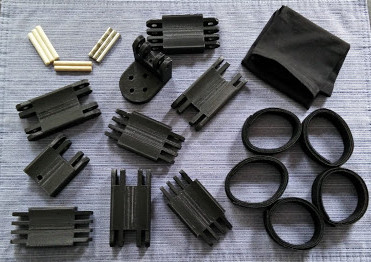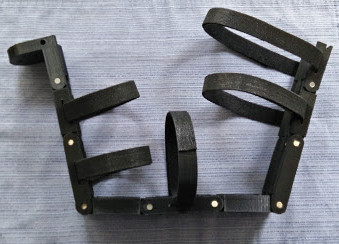The Idea
An old and reliable method of controlling prosthetic devices is by using a harness-socket actuation system in a body powered manner [1]. In order to further reduce the cost of our prosthetic hands omitting any kind of electronics and servos, we designed a body powered actuation system that an amputee can use as an interface to control a prosthetic hand. The proposed system is inspired by the classic harness-socket actuation systems but is designed as an exosceleton. The system consists of modular parts. Depending on the user's arm length an appropriate number of intermediate modules can be printed together with the end-effector and the tendon routing entry part.
Description
The proposed body powered actuation system, consists of:
- modular 3D-printed parts
- pins, dowels or shafts
- Velcro tape
- an elastic arm sleeve
- Dyneema thread
The mechanism can be replicated and assembled quite easily, as depicted in the picture below. Moreover, the proposed system with a prosthetic hand attached at the end-effector, can be used as a body powered prosthesis simulator for non-amputees that want to experience how functional a prosthesis is (e.g., kin that want to experience what amputees - family members feel). The cost of the system is less than 25$ and the weight 250 gr. Enjoy!

References:
[1] R. J. Pursley, "Harness patterns for upper-extremity prostheses", ArtifIcial Limbs, 2(3):26-60, Sep 1955.
 OpenBionics
OpenBionics


Discussions
Become a Hackaday.io Member
Create an account to leave a comment. Already have an account? Log In.